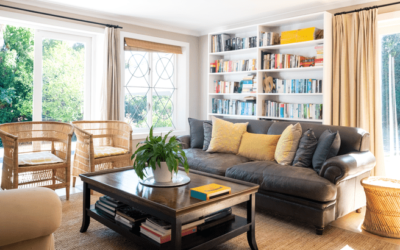
“The 2018 Profile of Home Buyers and Sellers from the National Association of Realtors shows that 12% of all buyers have a multigenerational household.”
Did you know that 1 in 6 Americans currently live in a multigenerational household?
According to Generations United, the number of multigenerational households rose from 42.4 million in 2000 to 64 million in 2016. The 2018 Profile of Home Buyers and Sellers from the National Association of Realtors shows that 12% of all buyers have a multigenerational household.
Why Are Many Americans Choosing to Live in a Multigenerational Household?
The benefits to multigenerational living are significant. According to Toll Brothers,
“In recent years, there’s been a steady rise in the number of multigenerational homes in America. Homeowners and their families are discovering new ways to get the most out of home with choices that fit the many facets of their lives.”
The piece continues to explain the top 5 benefits of multigenerational living. Here is the list, and a small excerpt from their article:
1. Shared Expenses
“…Maintaining two households is undeniably costlier and more rigorous than sharing the responsibilities of one. By bringing family members and resources together under one roof, families can collectively address their expenses and allocate finances accordingly.”
2. Shared Responsibilities
“Distributing chores and age-appropriate responsibilities amongst family members is a tremendous way of ensuring that everyone does their part. For younger, more able-bodied members, physical work such as mowing the lawn or moving furniture is a nice trade-off so that the older generation can focus on less physically demanding tasks.”
3. Strengthened Family Bond
“While most families come together on special occasions, multigenerational families have the luxury of seeing each other every day. By living under one roof, these families develop a high level of attachment and closeness.”
4. Ensured Family Safety
“With multiple generations under one roof, a home is rarely ever left unoccupied for long, and living with other family members increases the chances that someone is present to assist elderly family members should they have an accident.”
5. Privacy
“One of the primary trepidations families face when shifting their lifestyle is the fear of losing privacy. With so many heads under one roof, it can feel like there’s no place to turn for solitude. Yet, these floor plans are designed to ensure that every family member can have quiet time… [and] allow for complete separation between the generations within the household.”
Bottom Line
The trend of multigenerational living is growing, and the benefits to families who choose this option are significant. If you’re considering a multigenerational home, let’s get together to discuss the options available in our area.
To view original article, visit Keeping Current Matters.
What Credit Score Do You Really Need to Buy a House?
While many lenders use credit scores like FICO Scores to help them make lending decisions, each lender has its own strategy.
Is Affordability Starting to Improve?
While affordability is still tight, there are signs it’s getting a little better and might keep improving throughout the rest of the year. Here’s a look at the latest data.
Are There More Homes for Sale Where You Live?
Increased housing supply spells good news for consumers who want to see more properties before making purchasing decisions.
Where Will You Go After You Sell?
Want to see what’s available? Your real estate agent can show you what homes are for sale in your area, so you can see if there’s one that works for you and your needs.
Helpful Negotiation Tactics for Today’s Housing Market
One thing is true whether you’re a buyer or a seller, and that’s how much your agent can help you throughout the process.
What Every Homeowner Should Know About Their Equity
Understanding how much equity you have is the first step to unlocking what you can afford when you move.





